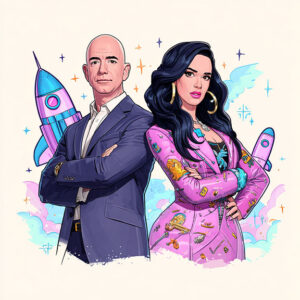 During the last pandemic, some organizations mandated vaccination against COVID-19. As another pandemic is inevitable, it is worth revisiting the moral issue of mandatory vaccination in response to a pandemic.
During the last pandemic, some organizations mandated vaccination against COVID-19. As another pandemic is inevitable, it is worth revisiting the moral issue of mandatory vaccination in response to a pandemic.
Schools have a well-established precedent for requiring students to be vaccinated, although there have been ways to opt out. The moral justification is usually a utilitarian one: while there is a cost and possible harm arising from mandatory school vaccinations, this is outweighed by the harm these vaccinations prevent. Students are in close contact in closed spaces for long periods of time, putting them at risk. As such, allowing students (or, rather, their parents) to opt out of vaccines would put themselves and others at greater risk. Exemptions can, and should, be granted in cases where a person would be medically harmed by vaccination; but these are extremely rare cases. During a pandemic, the moral argument is even stronger as the risk and harm would be greater than in normal circumstances.
In terms of a moral objection to mandatory vaccinations at schools during a pandemic is that the long-term effects of a new vaccine on children and teens would not be known. As such, one could claim that possible harmful effects of the vaccine might outweigh the harms of being unvaccinated. While this is a legitimate concern, it is not unique: all past vaccines have raised the same concern. So far, the benefits have consistently outweighed the harms of vaccination. So unless there is evidence that a new vaccine presents a special problem, then it is as morally acceptable to require it during a pandemic as it was, for example, to require the polio vaccine when it was developed. This is not to deny that things can go wrong, but that we always must make such decisions without having certainty.
Employers requiring vaccination is more controversial. While some professions, such as healthcare workers and military personnel, are usually required to get vaccinated these are exceptions rather than the rule. Most professions, even those that involve working closely with other people, do not require vaccinations, even during a pandemic. There are also moral questions about what employers can compel their employees to do.
In general, the American right supports granting considerable power to employers over their employees. One example is at will employment which allows employers to fire employees at will. For example, if an employee refused to stop smoking (outside of the workplace) they could be fired. As another example, if an employee expresses political views on their own time that their boss dislikes, they can be fired. Given that the right generally supports employers having great power over their employers, one might think they would accept that employers could mandate vaccination on the pain of being fired. While workers would be free to refuse, few can afford to quit their jobs and companies have great coercive power.
But the right has made vaccines part of their political war. While they would normally favor employers imposing what they wish on their employees, the anti-vaxxers on the right have opposed this mandate. They have shown that when corporations do not side with them in their manufactured culture war battles, they will turn against these businesses. This is presumably because they believe the political points they gain will outweigh a conflict with the corporations who help fund their re-elections.
While the right professes to be anti-vax because of their love of freedom, this is a bad faith claim. The right has been busy passing restrictive laws to “solve” problems that do not exist. For example, the right has been busy limiting access to voting based on their “big lie” about the 2020 election. If they cared about freedom, they would not be doing this. They have also been busy passing laws aimed at trans people, claiming that strict restrictions must be in place to protect people from (imaginary) dangers. Again, if they believed that freedom is so important, they would not be passing such laws. And if they really believed in protecting people from real harm, they would not be anti-vax.
The left generally favors workers’ rights and often seeks to at least slightly reduce the power disparity. As such, it would make sense for the left to generally hold that workers could refuse to be vaccinated without being fired. That said, the left also has concerns beyond the workplace, so some leftists might favor mandatory vaccination imposed by the state. This would typically be morally justified on utilitarian grounds: the state is supposed to use its coercive powers to protect citizens, and this could include requiring vaccination during the next pandemic.
My own view is, to state the obvious, that this issue is complicated. On the one hand, people have the moral right to control their bodies. This provides a moral foundation for arguing against vaccine mandates. On the other hand, all rights should be morally limited by the harm that might be done to others in exercising them. To use a silly example, I have the right to run as fast as I wish. But I do not have the right to charge into other people. This is because my actions could hurt them. As another example, while I do have the right to remove the brakes from my truck, I do not have the right to drive it on public roads after doing this. This is because I would hurt other people. In the case of the next pandemic, the harms would likely warrant mandatory vaccination just as people are required to have working brakes on their vehicles and forbidden from charging other people like deranged bulls.


 While most states have hate crime statutes
While most states have hate crime statutes It might seem like woke madness to claim that medical devices can be biased
It might seem like woke madness to claim that medical devices can be biased A few years ago, PragerU tried to push back on Twitter (now X) against arguments by young Americans about racism. In general, getting involved in social media battles is a bad idea. To use an AD&D analogy, these fights are like punching green slime: the more you attack, the more you hurt yourself. And you end up covered in slime. It is usually best to avoid rather than engage.
A few years ago, PragerU tried to push back on Twitter (now X) against arguments by young Americans about racism. In general, getting involved in social media battles is a bad idea. To use an AD&D analogy, these fights are like punching green slime: the more you attack, the more you hurt yourself. And you end up covered in slime. It is usually best to avoid rather than engage.  In addition to the pandemic, 2020 was marked by
In addition to the pandemic, 2020 was marked by  This contains many spoilers. When I first saw the trailer for The Tomorrow War my thought was “I wonder who that discount Chris Pratt is?” When I realized it was the actual Chris Pratt, my thought was “he must really need money.” Yes, it is exactly that kind of movie. I will start with some non-philosophical complaints and then move on to what is most interesting (and disappointing) about the flick: time travel.
This contains many spoilers. When I first saw the trailer for The Tomorrow War my thought was “I wonder who that discount Chris Pratt is?” When I realized it was the actual Chris Pratt, my thought was “he must really need money.” Yes, it is exactly that kind of movie. I will start with some non-philosophical complaints and then move on to what is most interesting (and disappointing) about the flick: time travel. In the face of real problems, the Republican legislature of my adopted state of Florida has been busy addressing fictional problems and undermining democracy. For example,
In the face of real problems, the Republican legislature of my adopted state of Florida has been busy addressing fictional problems and undermining democracy. For example,  As a runner, I have often imagined what it would be like to have super speed like the Flash or Quicksilver. Unfortunately for my super speed dreams, Kyle Hill has presented the
As a runner, I have often imagined what it would be like to have super speed like the Flash or Quicksilver. Unfortunately for my super speed dreams, Kyle Hill has presented the  In the previous essay, I looked at the question of whether a good person could be a billionaire. I concluded that, in general, the two are not compatible. The gist of the argument is that if a person is good and they have vast resources, then they would use those resources to do good. I, of course, also used an analogy: could a good person on a derelict ship sit on a giant pile of supplies while other people suffered and died from lack? The answer is obvious: a good person would not do that. In thinking a bit more about this matter, I realized I had omitted some important ethical considerations.
In the previous essay, I looked at the question of whether a good person could be a billionaire. I concluded that, in general, the two are not compatible. The gist of the argument is that if a person is good and they have vast resources, then they would use those resources to do good. I, of course, also used an analogy: could a good person on a derelict ship sit on a giant pile of supplies while other people suffered and died from lack? The answer is obvious: a good person would not do that. In thinking a bit more about this matter, I realized I had omitted some important ethical considerations.